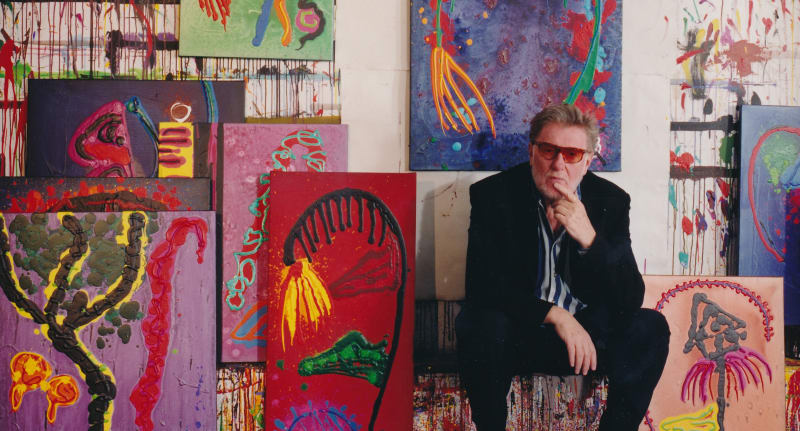Hales is delighted to announce representation of the Estate of the legendary British artist John Hoyland. In fall 2021, Hales will present a solo display of Hoyland’s late works at one of the world's leading international art fairs, followed by a solo exhibition at Hales London in 2022. Commemorating ten years since Hoyland’s death and celebrating the final era of Hoyland’s oeuvre, this summer will see the release of a dedicated book and solo exhibition entitled John Hoyland: The Last Paintings at Museums Sheffield.
John Hoyland (b. 1934 Sheffield, UK – d. 2011 London, UK) was one of the most inventive and dynamic abstract painters of the post-war period. Over the span of more than a half-century his art and attitudes constantly evolved. A distinctive artistic personality emerged, concerned with colour, painterly drama, with both excess and control, with grandeur and above all, with the vehement communication of feeling.
Hoyland was a life-long proponent of the possibilities of non-figurative imagery, which possessed for him, he once wrote, ‘the potential for the most advanced depth of feeling and meaning’. His artworks appear spontaneous but beneath the surface, each composition has an essential formality and a deep emphasis on structure. The visual power behind each painting is methodically concocted through explosive experiments with colour, scale and abstract form.
The artist's last years were marked by ill-health and the death of many close friends, although he continued to paint until a few months before his own death. His final works are the consolidation of five decades of experimentation, and the belief in the possibilities of paint to communicate depth of feeling and emotion. Contemplating his own mortality, there is a sense of the otherworldly and a connection to the void in these works. Hoyland’s use of a dark ground is formal, structural and emotive, and layered pools of paint evoke chance, freedom and vitality. In the darkness there are defiant and expressive strokes of swirling bright colour and floating orbs, implying hope and optimism even at the end of his life.
Hoyland had many career highlights, beginning with his inclusion in the influential Situation exhibitions of 1960 and 1961. He was selected as a New Generation artist at the Whitechapel Gallery in 1964. An early career retrospective curated by Bryan Robertson was held at the Whitechapel Gallery in 1967. In 1969, alongside Anthony Caro, Hoyland represented Great Britain at the Sāo Paulo Biennale in Brazil. In 1982 he won the John Moore Painting Prize. In 1991 he was elected a Royal Academician and in 1999, he was appointed Professor of Painting at the Royal Academy Schools. A solo exhibition at the Royal Academy in 1999 was followed in 2006 with a retrospective at Tate St Ives, and in 2015 a major survey inaugurated Damien Hirst’s Newport Street Gallery.
Hoyland’s work is in many collections, including the Royal Academy of Arts, UK; Tate, UK; National Galleries of Scotland, UK; National Museum of Wales, UK; National Museums of Northern Ireland, UK; The British Museum, UK; Victoria and Albert Museum, UK; The Hepworth, Wakefield, UK; Arts Council Collection, UK; Government Art Collection, UK; British Council, UK; Museum of Modern Art, NY, USA; Museum of Fine Arts, Boston, MA, USA; Virginia Museum of Fine Arts, VA, USA; Philadelphia Museum of Art, PA, USA; Yale Centre for British Art, New Haven, CT, USA; Albright-Knox Art Gallery, NY, USA; Musée des beaux-arts de Montréal, Canada; Museum of Modern Art, Rio de Janeiro, Brazil; Museum Liaunig, Neuhaus, Austria; Art Gallery of New South Wales, Australia; Art Gallery of South Australia, Adelaide; and Art Gallery of Western Australia.

